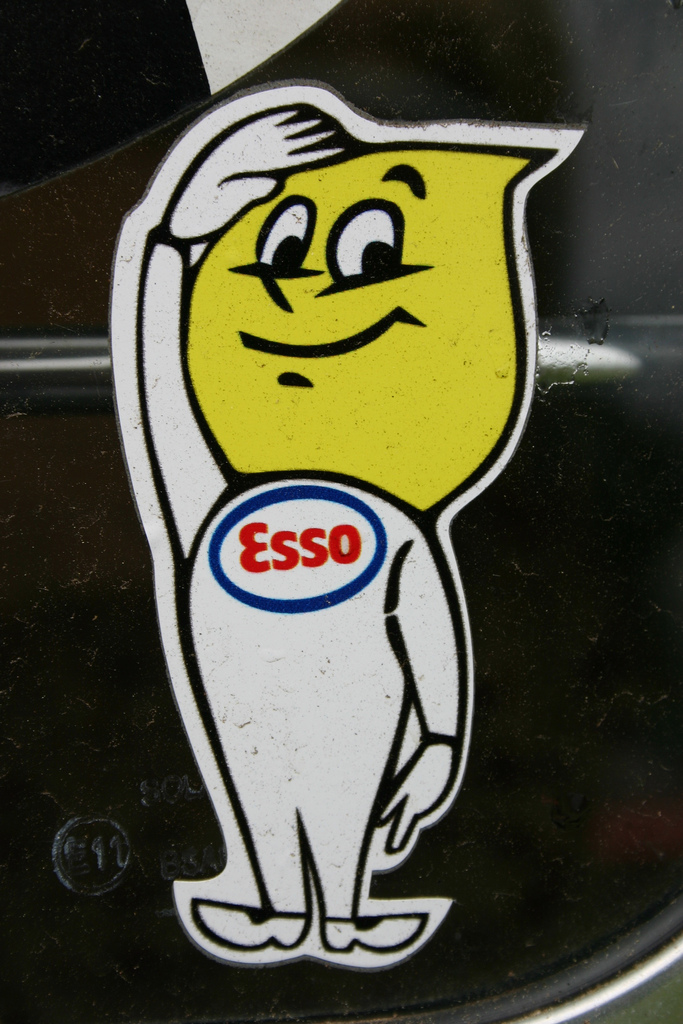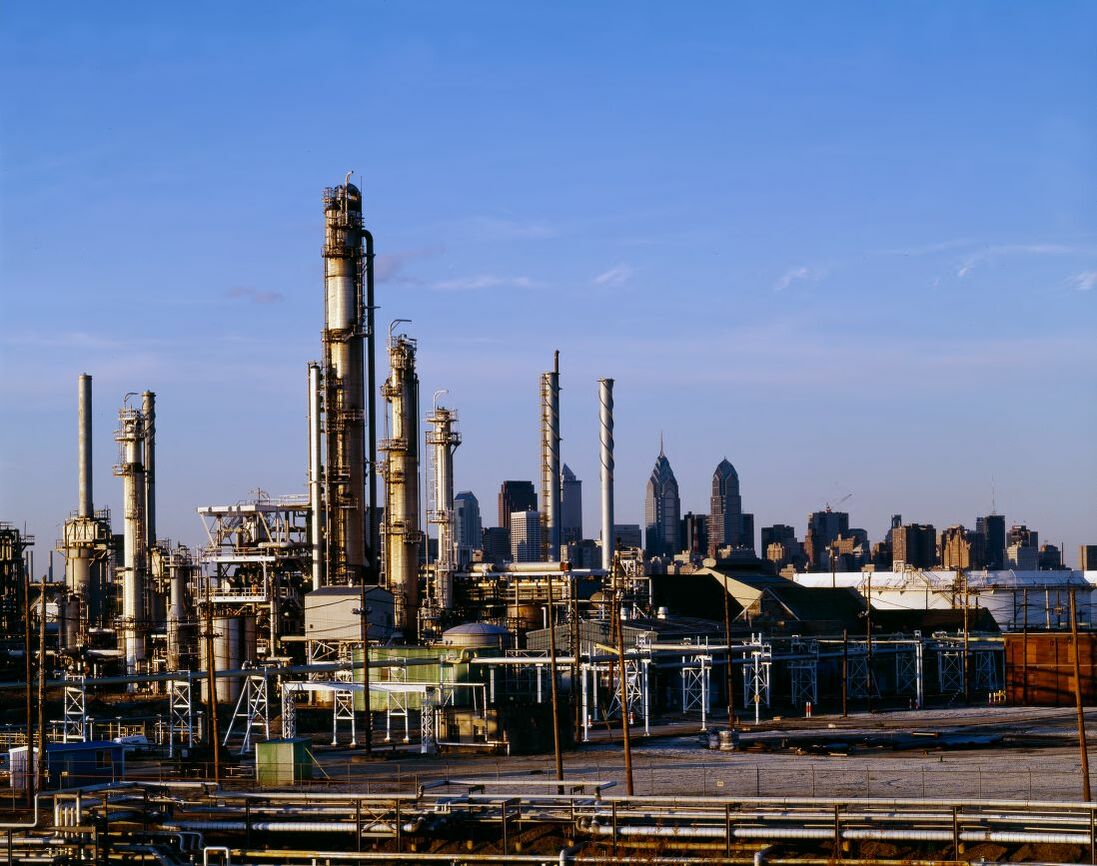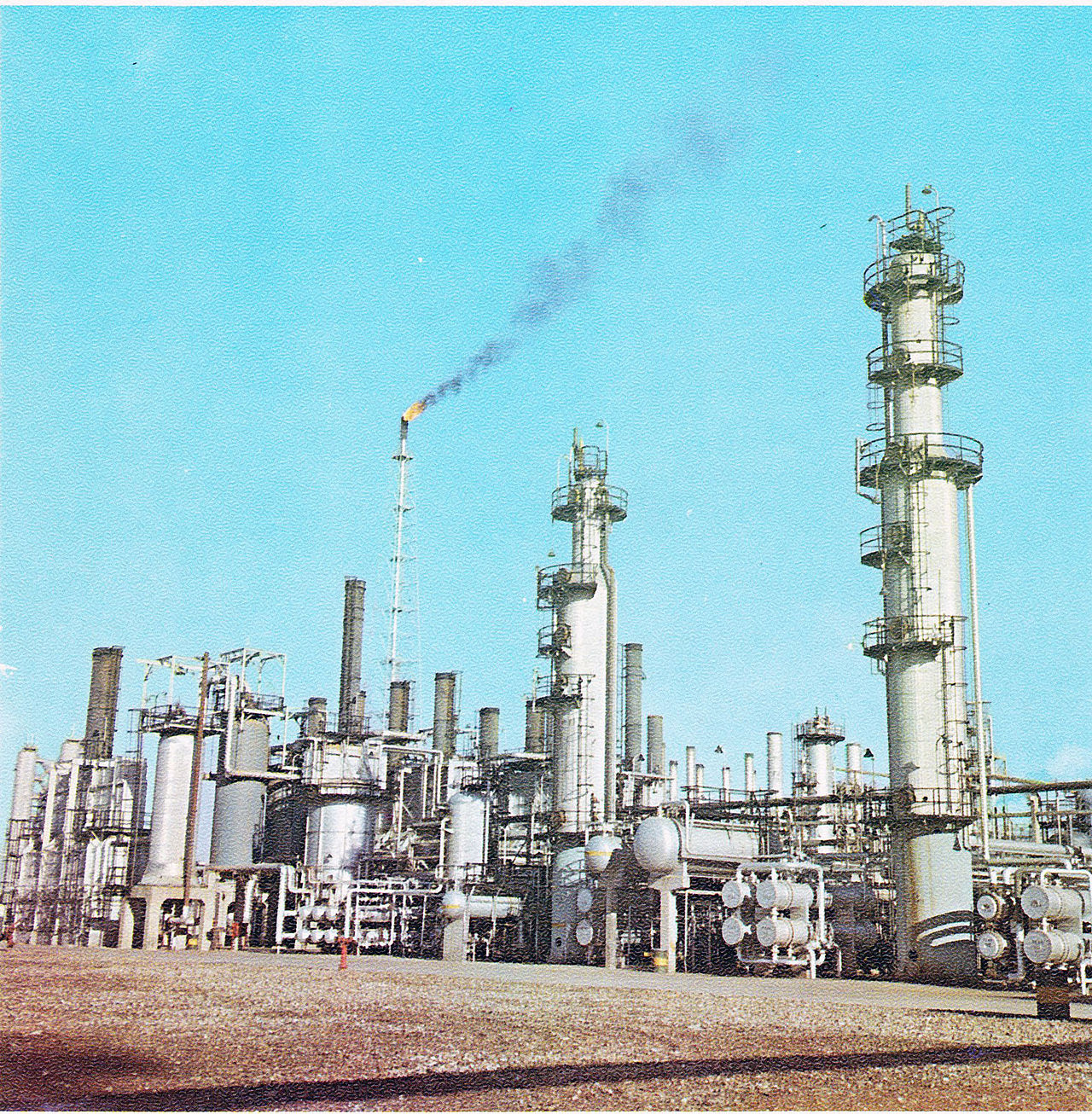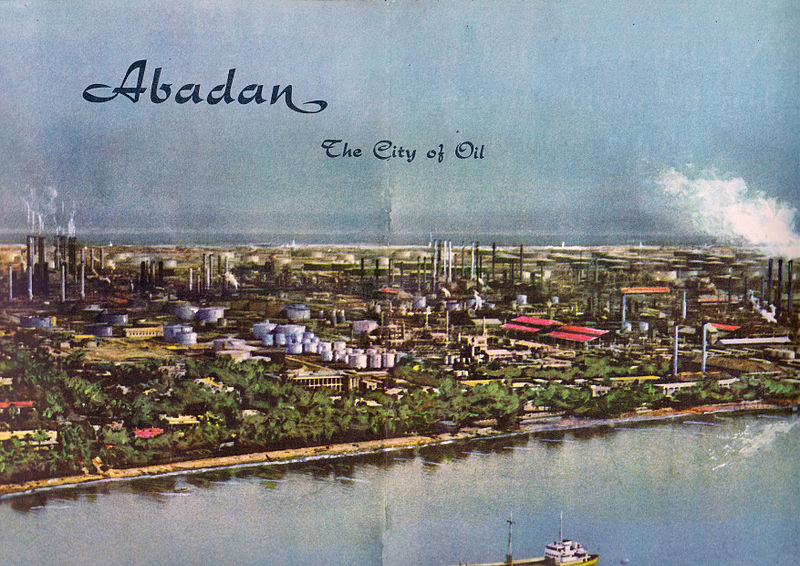Written by guest blogger, Carola Hein.
Among my early childhood memories are Esso items. My father worked for the German branch of the parent company, Exxon, an American oil company. He would often bring home collectible sticker images of wild animals or fish that I could collect in albums published by Esso. From the small Esso man to the Esso tiger, our home hosted a number of company promotional products. Every time we travelled we stopped at Esso gas stations to fill up the tank. In my early mental map, petroleum played a structuring and entertaining role, one quite different from the large refineries where my father worked.
 Figure 1: Esso Oil Drop Man was an emblem of the company present at gas stations during the 1950s. Source: ExxonMobil
Figure 1: Esso Oil Drop Man was an emblem of the company present at gas stations during the 1950s. Source: ExxonMobil
In my contribution to the special issue, entitled “Old Refineries Rarely Die”: Port City Refineries as Key Nodes in the Global Petroleumscape,” I focus on refineries. These huge, highly specialized and expensive industrial structures are globally similar and usually hidden in large industrial areas, often in fenced-off port locations. I trace their historic evolution, form, and function in global networks.
The article explores exemplary cases in four select periods of the petroleum industry: the lighting age (1860s–1910s), the car age (1910s–1950s), the plastic age (1950s–1980s), and the period since the 1980s with early attempts to go beyond oil. I examine the relationship between major refineries and nearby (port) cities of Philadelphia, Dunkirk, Suez, Abadan, Rotterdam, and Tehran. These refineries are fascinating places in themselves, but they are also part of a much larger network of oil spaces. Few people realize the pervasiveness of petroleum, but it is all around us.
 Figure 2: Philadelphia Oil Refinery, 1980. Source: Library of Congress
Figure 2: Philadelphia Oil Refinery, 1980. Source: Library of Congress
Studying architecture and urban planning, I didn’t expect to encounter the oil world again. The first article that I wrote and published was about the City Nord business district in Hamburg built in the 1950s. The district was designed to give relief to the inner city where big companies occupied multiple buildings and clogged up space. A new, American-inspired comprehensive plan for a business district was designed to host large-scale headquarters each of which was designed by an architect after a design competition. In the City Nord, companies built city-like headquarters with a hairdresser, cafeteria and other services on-site. Three major oil companies were among the first occupants: Esso, BP, and Shell. Each of the companies opted for a unique design. BP’s building stood out with its hexagonal elements and open floor plan, whereas Esso had a glass-clad modernist building served by elevators.
As I continued to study architectural and urban history, I began to pay more attention to the impact of oil on the built environment. Investigating the history of the selection of a capital for the European Communities, today’s European Union, I found projects for business districts in Milan and in Paris (La Defense), in which oil headquarters played an important role. Studying the works of the French planner Maurice Rotival, I realized that he not only planned a capital of Europe in 1945, but his career largely floated on oil. Trained in Paris, Rotival worked in Caracas, where oil revenue allowed for large-scale replanning of the city centre. After becoming acquainted with the Rockefeller family and their architect Wallace Harrison, Rotival was appointed professor at Yale University.
From project to project, I discovered an interconnected network of spaces that were driven by oil interests, some more and some less visible, and a layer of representation of these oil spaces (or their absence) in corporate publications as well as artistic, architectural, and other commentaries from the public at large. The different parts of what I have termed the petroleumscape vary in space and visibility: some are as big as a refinery and storage tanks in a major port, others are as small as gas stations.
Among the diverse industrial, administrative, retail, and ancillary spaces that form the petroleumscape, refineries have the most important “staying power” and they are the focus of my contribution to the special issue on the Material Realities of Energy Histories. Refineries have a number of requirements for implantation. They need access to water, both for industrial processes and shipping. They also need distribution infrastructures. Once these connections are built, refineries tend to stay in place, attracting flows of oil rather than following them. Even when their ownership changes during periods of war and nationalization, of destruction and re-appropriation, their location stays the same.
 Figure 3: Adaban Oil Refinery. Source: Wikipedia Commons
Figure 3: Adaban Oil Refinery. Source: Wikipedia Commons
My article explores the history of the construction of refineries as part of global transformations and national strategies. It examines how the location of refineries globally has changed over time as a result of colonization, decolonization, and war. It explores their spatial impact on their mostly urban neighbors, and it examines what their presence means for post-oil landscapes. By considering the multitude of ways in which petroleum has shaped a broad range of spaces in people’s everyday lives, the article provides insight into the relationships between energy landscapes, space, and culture.
Such an enhanced understanding will hopefully inspire the reader to reflect upon the diverse ways in which new sustainable energy networks will reshape our spaces and lifestyles. Such a reflection might even inspire producers, designers, and parents to provide new kinds of trinkets, toys, and other products to children, who might use them to imagine the energy systems of the future.
Banner image: Adaban the city of oil. Source: Wikimedia Commons
Carola Hein is Professor and Head, History of Architecture and Urban Planning Chair at Delft University of Technology. Her book publications include The Capital of Europe, Rebuilding Urban Japan after 1945, Port Cities, Routledge Handbook of Planning History. Read her article in the latest issue of CJH, “‘Old Refineries Rarely Die’: Port City Refineries as Key Nodes in The Global Petroleumscape”—free for a limited time here.

